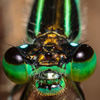An Eye on Macro for 2015
Jan 11, 2015 22:38:20 #
Towards the end of 2014 I started to realize a long term goal of mine, stacking in the field with natural light. It goes without saying, that this form of photography is dependent on the overall light quality. What I have also learned is it is very dependent on consistent intensity of light. Stacking programs dont handle variations very well. At first, as light intensity varied I would change shutter speed to keep the exposure consistent. This seems to work but it requires a careful attention to the exposure meter from shot-to-shot. One day, I was out shooting static flora and having a dickens of a time getting the exposure range I wanted. Thought occurred to me to try exposure bracketing. I was pleasantly surprised with the stack results. Contrast bands that normally occur with slight variations in exposure, were all but nonexistent, even with Zerene's PMax algorithm.
In the past I have tried constant LED illumination stacks but could never get satisfactory results. I decide to give the bracketing technique a whirl on this fly eye and am pleased with the results. Illumination setup was 4 diffused Jasnjo LED lights shot with 3EV bracket. Technique shows promise and I look forward to doing more high magnification stacks employing this technique.
I am including some of the field shots I took that led to this revelation. One is true macro and the other two are closeups 1:4 and 1:2. An interesting thing I discovered in the field stacks - for some reason, I was under the impression that moving the camera was the best way to focus stack lower magnification images. I was referencing the Zerene Online help guide and ran across an article by Rik Littlefield that noted in many cases using the AF motor on the camera lens is an excellent option for stacking and often preferred for larger subjects. The article is found online here:
http://zerenesystems.com/cms/stacker/docs/troubleshooting/ringversusrail
I used the AF motor (manually controlled with the Olympus Capture software and indeed the stacks came out very clean without the distortions I sometimes see when using a focusing rail.
In the past I have tried constant LED illumination stacks but could never get satisfactory results. I decide to give the bracketing technique a whirl on this fly eye and am pleased with the results. Illumination setup was 4 diffused Jasnjo LED lights shot with 3EV bracket. Technique shows promise and I look forward to doing more high magnification stacks employing this technique.
I am including some of the field shots I took that led to this revelation. One is true macro and the other two are closeups 1:4 and 1:2. An interesting thing I discovered in the field stacks - for some reason, I was under the impression that moving the camera was the best way to focus stack lower magnification images. I was referencing the Zerene Online help guide and ran across an article by Rik Littlefield that noted in many cases using the AF motor on the camera lens is an excellent option for stacking and often preferred for larger subjects. The article is found online here:
http://zerenesystems.com/cms/stacker/docs/troubleshooting/ringversusrail
I used the AF motor (manually controlled with the Olympus Capture software and indeed the stacks came out very clean without the distortions I sometimes see when using a focusing rail.
Shot specs - Olympus OM-D E-M1, Vivitar 90-180 Flatfield tube lens, Olympus LMPlan FL 10X /.025 objective, ISO100, SS var 3EV, Manual stack with Zeiss Fine Focus block 360 total images fusion merged with Photomatrix into 120 frames and stacked in Zerene.
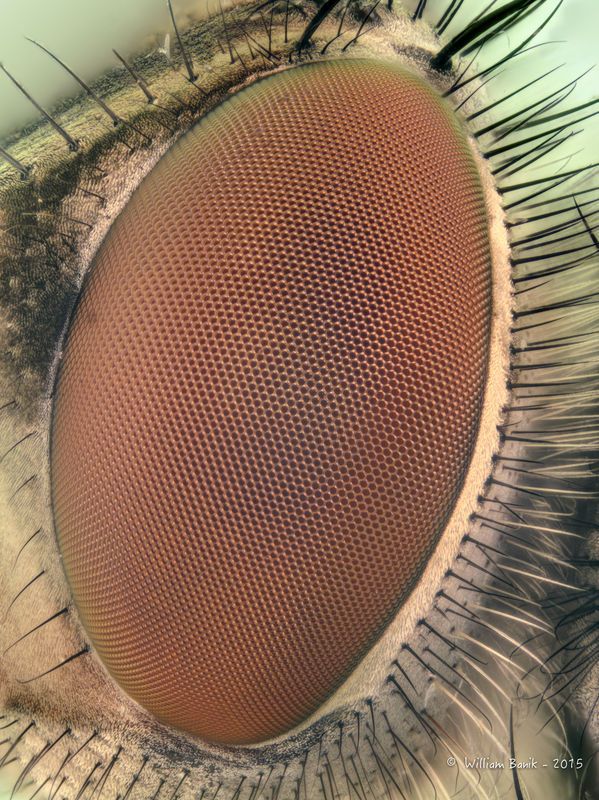
(Download)
Shot specs - Lens focus stack (52 frames 5EV exposure bracket per frame) - OM-D E-M1 with Zuiko 60mm - ISO 100 - SS -Variable
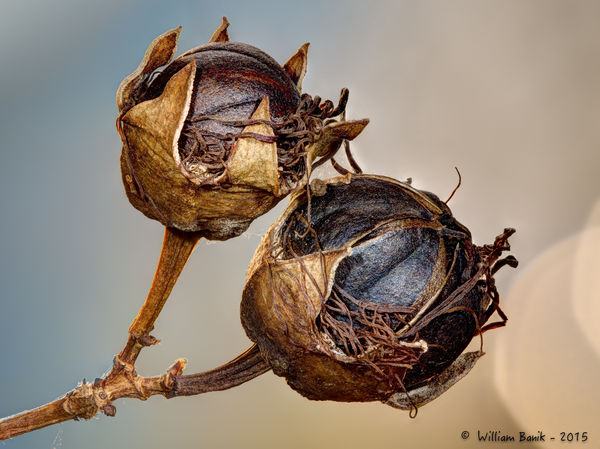
(Download)
Shot specifics (42 frames) - OM-D E-M1 with Zuiko 60mm 2.8 Macro - f/5.6 - ISO 100 - SS 1/4
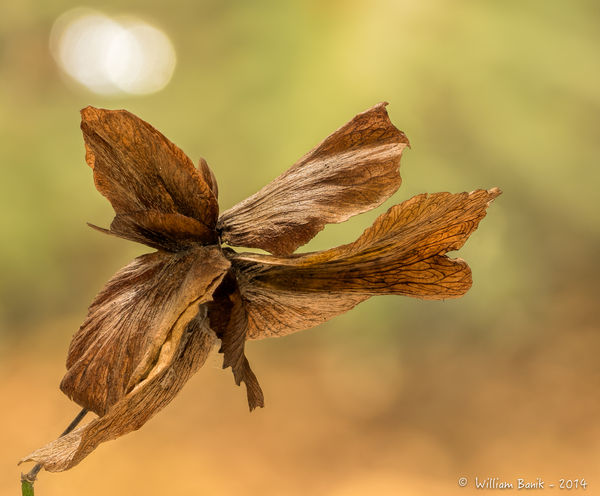
(Download)
30 Shot field stack - Olympus OM-D E-M1 / Zuiko 60mm Macro @ f/5.6 / ISO100 / SS - 1/25
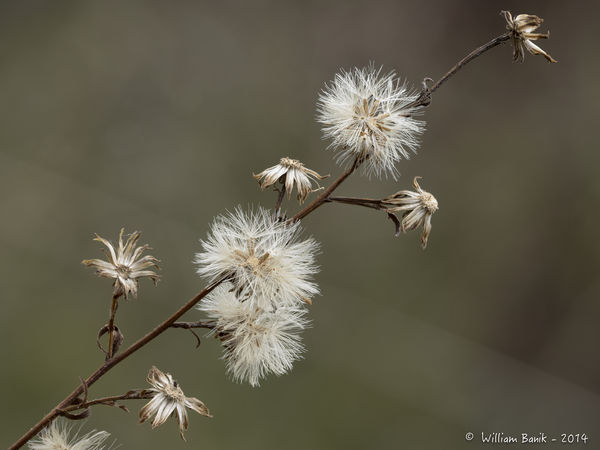
(Download)
Shot specs - Olympus OM-D E-M1 w 60mm f2.8 macro - 1:3 - f/3.5 - ISO100 - SS 1/15 - 19 image stack
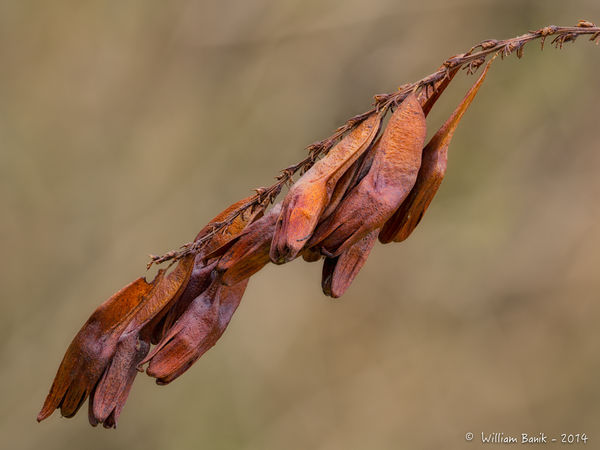
(Download)
Jan 11, 2015 22:46:55 #
Awesome results William. I started my stacks in the field with natural light. The advantage I had was cloudy days which results in more diffused even lighting.
Jan 11, 2015 22:57:42 #
LoneRangeFinder wrote:
Thank you Allen. I was fortunate on most of the field stacks as it was overcast. However, on the shot of the two bulbs the sun kept peeking through the clouds and was the source of exposure frustration until I tried exposure bracketing. It's not the end all be all tool but certainly a tool I will employ when needed.Awesome results William. I started my stacks in the field with natural light. The advantage I had was cloudy days which results in more diffused even lighting.
Jan 11, 2015 23:13:42 #
A-PeeR wrote:
Bracketing would be a good way to handle this issue. Did you use AE bracketing, or adjust on the fly? EV steps?Thank you Allen. I was fortunate on most of the field stacks as it was overcast. However, on the shot of the two bulbs the sun kept peeking through the clouds and was the source of exposure frustration until I tried exposure bracketing. It's not the end all be all tool but certainly a tool I will employ when needed.
Jan 11, 2015 23:18:16 #
LoneRangeFinder wrote:
I did it manually changing shutter speed between shots. Olympus Capture software doesn't support bracketing when tethered. I need to check the mobile remote wifi software, OI Share, and see if it will support automatic bracketing setup in camera.Bracketing would be a good way to handle this issue. Did you use AE bracketing, or adjust on the fly? EV steps?
Jan 12, 2015 06:19:22 #
Excellent Article. It took me a minute to understand how you could use the AF motor, but see that your using software to tell you the distance between focus points. which is brilliant. When I shot my rose/web stack I simply used a chalk mark on the lens to help see the increments I moved the focus ring. Of coarse I'm only guessing as to how much I should move the ring between shots, but it seemed to work well. A long time user of Dmap only I still had to smooth the backgrounds out using one or two of the selected single shots, now I know why. The perspective of the camera changes thru the movement, which is a No brainer when you think about it.. I'm like slapping my forehead. I personally have wanted to do more, still life stacks in the field as well, just received a new tripod in the mail over the weekend. Had thought of longer exposures, mainly for the perfect background, but my formal tripod was not suited for my lens,tubes combo, in short a piece of junk.. Have Never considered exposure bracketing. So how are you choosing the correct exposure?? for each shot? Are they combined together to be more even, or do you select only one exposure per shot. I must say, your willingness to bracket 5 exposures manually per shot says a lot about your dedication to this task. The illustrations you've provided are all Excellent. The backgrounds are so clean and Natural looking, no contrast banding, Beautiful examples William. Thanks for sharing, this is better than the Discovery channel..
Jan 12, 2015 09:40:51 #
Really helpful information and web link William. I was just about to order a rail but now I am going to continue working to improve my focus ring technique, particularly on larger subjects. Thanks.
Jan 12, 2015 15:14:00 #
fstop22 wrote:
Martin: I read both William's (and the Zerene link) and your comments a bit more carefully. I've become locked in on the focusing rail as a "sure" way to control potential misalignment between stacks. My thinking is that this could improve the "keep rate" on your hand-held stacks-- and it improves my odds of actually capturing something usable. Excellent Article. It took me a minute to understa... (show quote)
I've never been quite satisfied with the background results on my own stacks and the resizing always seemed to leave a great deal to be desired. I've tossed quite a few.
Back to the field "lab".
Jan 12, 2015 15:59:29 #
LoneRangeFinder wrote:
Actually my keeper rate on my stacks is about 90%, that is if the subject sits still long enough for me to finish, front to back. Only other time I throw one out is when I don't get foreground in focus or start to far into the stack. I have hundreds I was not able to finish. I haven't had a haloing problem since a month or so of practicing. For the longest time I aligned and stacked both Pmap and Dmap but only chose Dmap as the finished photo to work on. I didn't use the Pmap as I never like the results, and I know why now due to the link William provided. From there I always have one or 2 things to touch up and then it's all about the background, using only a couple of the single stacks to clean up the finished stack. I am going to start using a tripod for specific types of subjects, like the rose/web I recently did. I'm glad I read this article as it will save me on a rail as well. As for my handheld, there's no turning back, 30 photos and counting. I can now breath and keep stacking which opens a whole now world.. The limitation being the perspective and how much I can fit into a photo at 1:1 magnification. I also don't know any other way to stack a Live subject unless it's gassed or dead and then you may as well use a tripod. I don't want to be one of those guys that stack dead subjects with tripods and play it off like it was a handheld capture. I think using a rail is still reliable, but would suggest using only Dmap to align and stack, then use your first or last photo in the stack to clean the finished product. I'm glad that William brought this subject up. It was staring me right in the face on my rose stack but never hit me, I didn't have to clean the background up, it was clean and blended very well. I just didn't like it because of the colors. Great Site is all I can say.Martin: I read both William's (and the Zerene lin... (show quote)
P.S. - I can't wait till you try one of your flower stacks with this method, Love them stacks.
Jan 12, 2015 18:38:07 #
fstop22 wrote:
Well I learned to not get too locked into procedure. I've used the focus ring process for landscape stacks, but never for macro. I just was thinking that it might be easier to focus with the ring rather than moving the camera for hand-held.Actually my keeper rate on my stacks is about 90%,... (show quote)
Jan 12, 2015 19:17:18 #
LoneRangeFinder wrote:
I guess if one started out this way it may be possible. Assuming we're talking handheld, then one hand would be partially busy moving the focus ring and or coarse the other hand is pressing the shutter button with one eye watching the focus bands and the other eye watching the point/keeping straight/your headed for. One more step than I use already. Personally I think it would be hardest to stay stationary, just pressure against my face, pressing the shutter button causes movement. I tend to channel all this in a forward motion once I start. If I'm not moving forward I may sway a bit left and right killing the stack. It's still worth a try.Well I learned to not get too locked into procedure. I've used the focus ring process for landscape stacks-- but never for macro. I just was thinking that it might be easier to focus with the ring rather than moving the camera for hand-held
Jan 12, 2015 21:29:59 #
As a wannabe macrophotographer, with limited resources and fewer help contacts, this topic is very interesting, though far beyond me, at this point. This is why I love UHH, presenting what others are doing and having success in, with an explanation to those who lack the ability / experience to do same. Thanks!
Jan 13, 2015 01:02:30 #
Strix wrote:
Ask around. There are more than a few "budget" rigs that will produce some pretty decent results. Not long ago, much of this was beyond my experience/ability. Then, thanks to the people here, I just started doing it, which was experience that gave me the ability. Some of this is still far above my skill set and knowledge but, not nearly as far off to me as it used to seem. Once you nail one or two, you get very motivated to move forward.As a wannabe macrophotographer, with limited resources and fewer help contacts, this topic is very interesting, though far beyond me, at this point.
At least I can make some sense out of these conversations now ;)
Jan 13, 2015 16:20:19 #
AlicanteBrenda wrote:
You are most welcome Brenda. Rail is a good macro tool. I have no plans of giving mine up but will use lens focal stacking whenever possible. I look forward to seeing what you efforts produce.Really helpful information and web link William. I was just about to order a rail but now I am going to continue working to improve my focus ring technique, particularly on larger subjects. Thanks.
Jan 13, 2015 16:22:02 #
LoneRangeFinder wrote:
There is no doubt a rail can produce stacks that are artifact free. Shallow depth of field subjects are excellent for stacking rails. Distortion from maximum camera distances is minimized. If you ever shoot a flower petal or leaf with some depth of field and go through the stack frame by frame you can see how the petal/leaf shape changes as the camera distance and lens perspective changes. Minor to be sure but just enough to cause artifacts along the edges. For a long time I thought there was an issue with my rig not being perfectly square. The more I measured it, thought about it, I realized squareness of the rig isn't the problem, it's the changing of camera distance and subsequent "change of subject shape". Particularly a "3D subject" (i.e. furled leaf or petal) as opposed to a flat plane subject(like a butterfly wing) against a contrasting background. Martin: I read both William's (and the Zerene lin... (show quote)
So I am coming to the following conclusions:
Stacking Rail = Good
Hand Stacking = Good
Lens Stacking = Good
Understanding when to use each tool = Excellent.
If you want to reply, then register here. Registration is free and your account is created instantly, so you can post right away.
